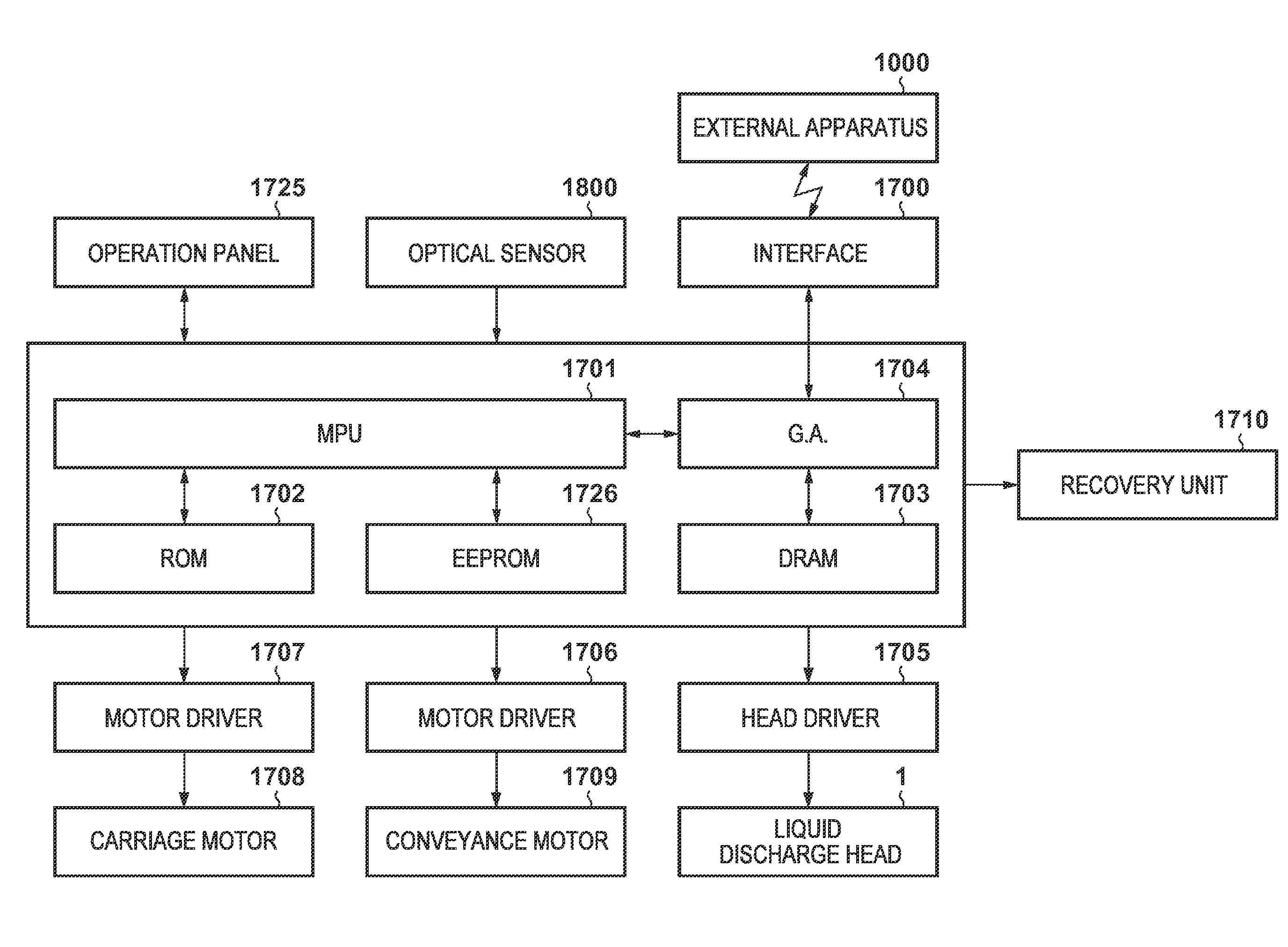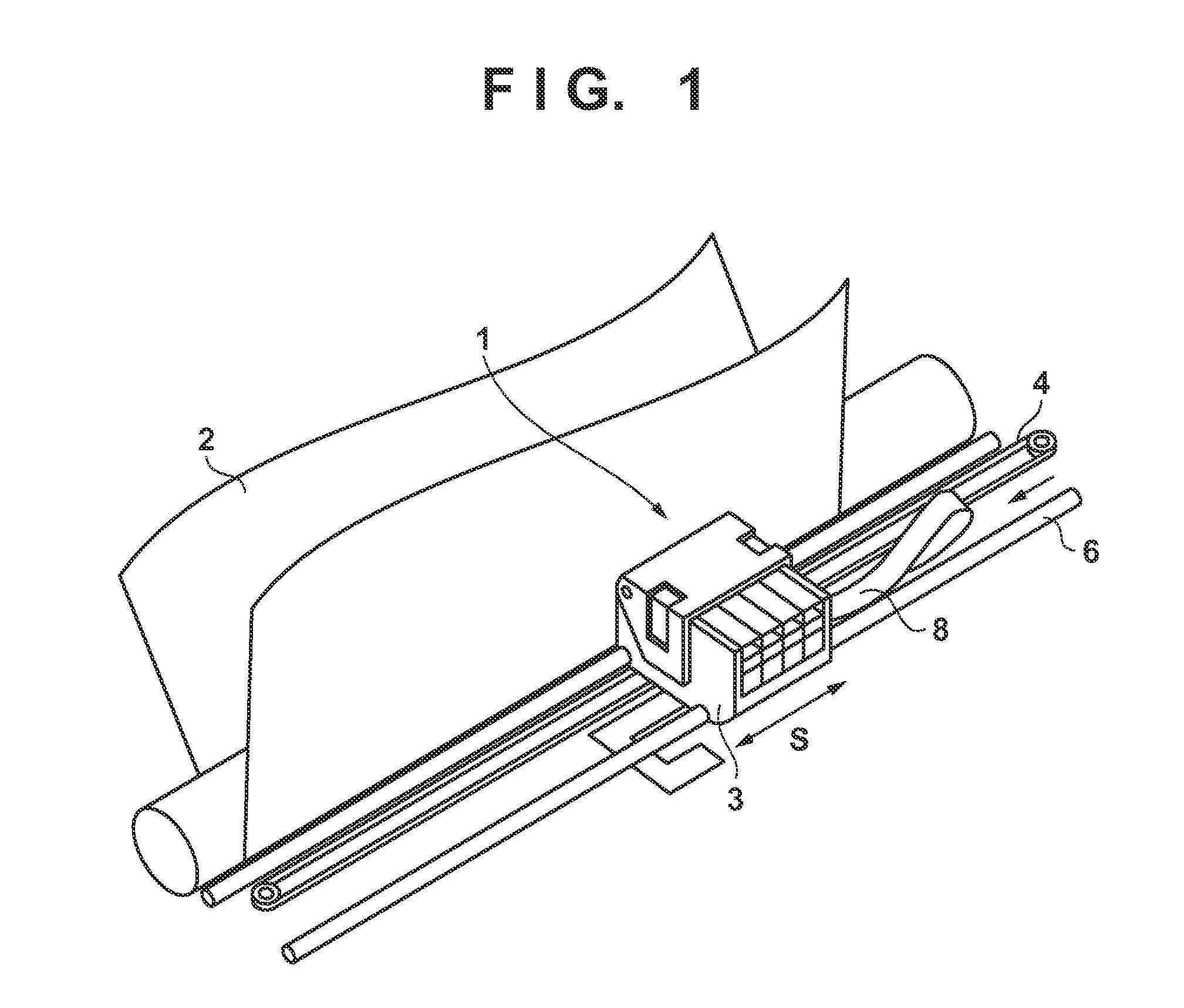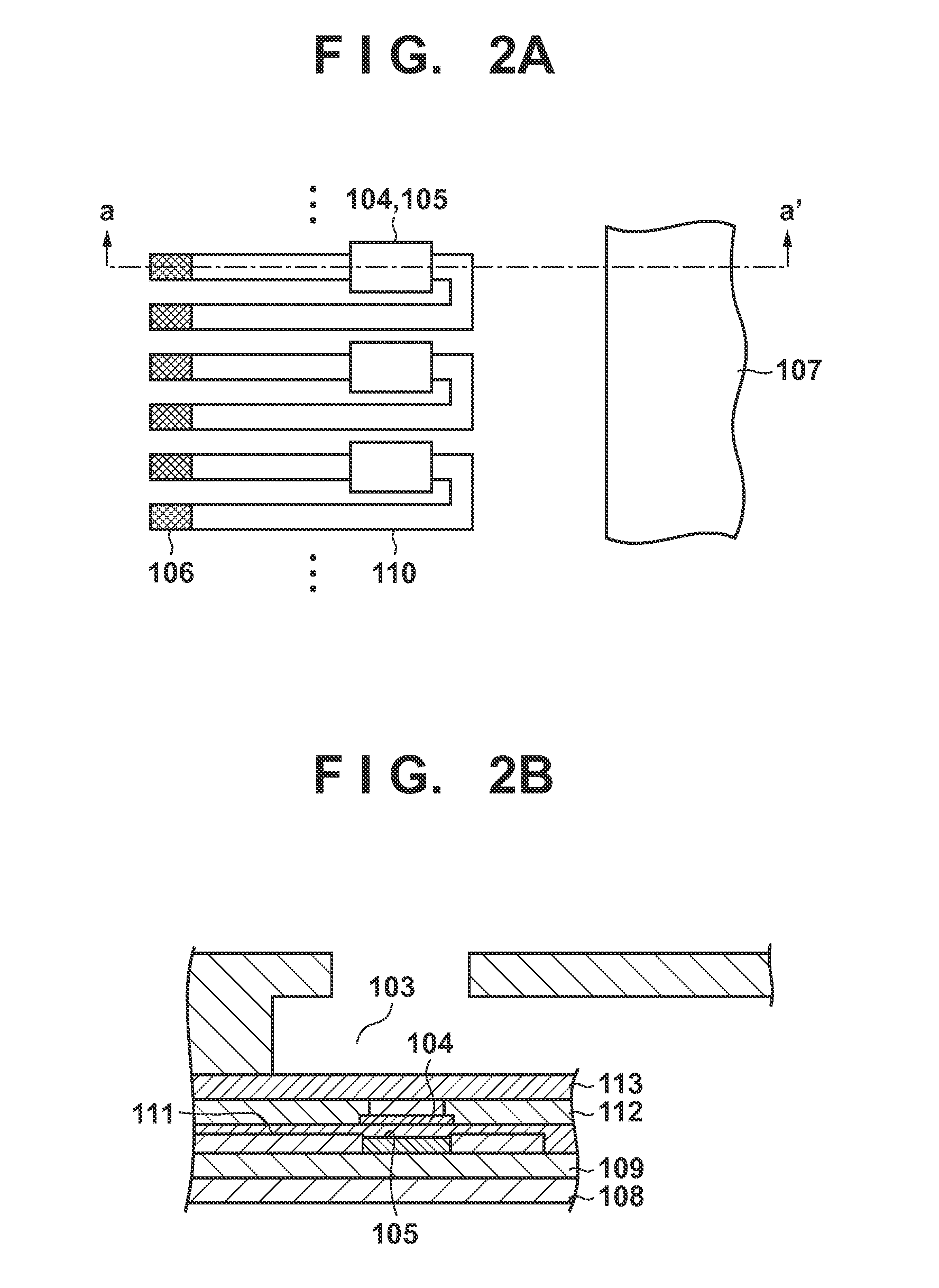Base, liquid discharge head, printing apparatus, and method for determining liquid discharge status
a liquid discharge head and printing apparatus technology, applied in printing, other printing apparatus, etc., can solve the problems of inability to accurately determine the liquid discharge status, the circuit scale is large, and the process takes time to complete, so as to achieve accurate liquid discharge status determination and simple arrangement
- Summary
- Abstract
- Description
- Claims
- Application Information
AI Technical Summary
Benefits of technology
Problems solved by technology
Method used
Image
Examples
first embodiment
[0071]FIGS. 6A and 6B are a side sectional view and plan view, respectively, showing the arrangement of temperature detection elements and a heater according to the first embodiment of the present invention.
[0072]As shown in FIGS. 6A and 6B, in this embodiment, two temperature detection elements (temperature sensors) 105A and 105B are provided for one heater. The two temperature detection elements (temperature sensors) formed as film resistors as described above are arranged immediately below one heater 104. This makes it possible to measure the temperature at two positions immediately below the heater, at which temperature changes are different from each other.
[0073]As shown in FIG. 6A, an interconnection connected to each temperature detection element is connected to an interconnection 110 in a layer different from that of the temperature detection element across the layer. By providing the interconnection in another layer, heat transferred via the interconnection between the two ...
second embodiment
[0086]In this embodiment, a case in which the temperature detection circuit described in the first embodiment is driven by using two electric current supply sources will be explained.
[0087]FIG. 10 is a circuit diagram showing the arrangement of a temperature detection circuit according to the second embodiment of the present invention.
[0088]The same reference numerals as those in FIG. 7 denote the same components inFIG. 10 and a description thereof will be omitted. As will be apparent by comparing FIGS. 10 and 7 with each other, in this embodiment, individual electric current supply sources 120A and 120B are provided for respective two temperature detection elements. In this embodiment, therefore, it is possible to control the electric current of each temperature detection element.
[0089]FIGS. 11A and 11B are graphs each showing temporal changes in output voltages from the two temperature detection elements in a case where an electric current supplied from the electric current supply...
third embodiment
[0096]In this embodiment, a case in which the ink discharge status is detected according to a voltage difference between two temperature detection elements will be described.
[0097]As described above, in normal ink discharge, part of a discharged ink droplet comes into contact with the surface of an anti-cavitation film 113, and thus a temperature difference between a portion immediately below the center of a heater 104 and a portion immediately below the periphery of the heater 104 becomes small. On the other hand, in ink discharge failure, the center and periphery of the heater 104 are in contact with air, the temperature difference between the portion immediately below the center and the portion immediately below the periphery does not become small, unlike normal discharge. In this embodiment, the ink discharge status is detected by detecting the magnitude of the temperature difference.
[0098]FIG. 13 is a circuit diagram showing the arrangement of a temperature detection circuit ac...
PUM
 Login to View More
Login to View More Abstract
Description
Claims
Application Information
 Login to View More
Login to View More - R&D
- Intellectual Property
- Life Sciences
- Materials
- Tech Scout
- Unparalleled Data Quality
- Higher Quality Content
- 60% Fewer Hallucinations
Browse by: Latest US Patents, China's latest patents, Technical Efficacy Thesaurus, Application Domain, Technology Topic, Popular Technical Reports.
© 2025 PatSnap. All rights reserved.Legal|Privacy policy|Modern Slavery Act Transparency Statement|Sitemap|About US| Contact US: help@patsnap.com



